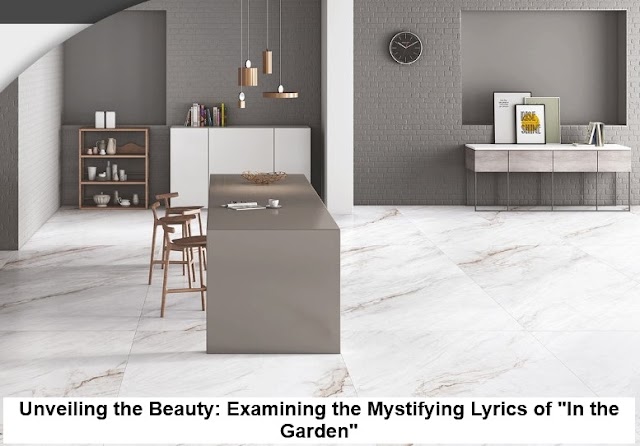Summary of Contents
IntroductionKnowing How to Use a Plant Litter Box
Plant Litter Box Benefits
3.1 A More Sustainable Option
3.2 Control of Natural Odours
3.3 Soil enrichment
Changing Your Pet's Litter Box to a Plant
Progressive Introduction
5.2 Positive Discipline
5.3 Observing and Modifying
Typical Issues and Solutions
6.1 Toxicity and Allergies
6.2.1 Plant Upkeep
FAQs
Conclusion
The damaging effects of traditional kitty litter on the environment are well known. The majority of variations are made of clay, which necessitates harmful mining techniques. On the other side, plant litter boxes use organic materials that are sustainable and biodegradable, lowering your carbon pawprint.
3.2 Control of Natural Odours
The smell of a litter box that lingers is a typical problem for pet owners. Plants like lemongrass and mint, which naturally absorb and neutralise odours, are used in plant litter boxes to alleviate this problem. Say good-bye to synthetic scents and welcome a naturally fragrant environment.
3.3 Soil enrichment
The soil in the plant litter box is improved as a result of the breakdown of your pet's excrement. A cyclical process that benefits both your indoor plants and your outdoor green area can be created by repurposing this nutrient-rich soil for your garden.
5.3 Observing and Modifying
Observe your pet's behaviour as it transitions. Be prepared to make modifications if necessary to ensure their comfort.
6.1 Toxicity and Allergies
Some of the plants used in plant litter boxes may cause allergic reactions in animals. To prevent any health problems, do your research and pick non-toxic products.
6.2.1 Plant Upkeep
To guarantee that the plants in the litter box survive and continue to successfully control odour, give them regular trimming and maintenance.
3.1 A More Sustainable Option
3.2 Control of Natural Odours
3.3 Soil enrichment
The Best Way to Choose a Plant Litter Box
4.1 Taking Your Pet's Preferences Into Account
4.2 Dimensions and Location
4.3 Ease of Maintenance
4.1 Taking Your Pet's Preferences Into Account
4.2 Dimensions and Location
4.3 Ease of Maintenance
Changing Your Pet's Litter Box to a Plant
Progressive Introduction
5.2 Positive Discipline
5.3 Observing and Modifying
Typical Issues and Solutions
6.1 Toxicity and Allergies
6.2.1 Plant Upkeep
FAQs
Conclusion
Introduction
Pet owners frequently struggle with the problem of managing pet excrement. Traditional trash cans and waste disposal techniques frequently use synthetic materials, which cause pollution and deplete precious resources. Enter the plant litter box, a ground-breaking solution that combines your pet's demands with the wellbeing of the environment.Knowing How to Use a Plant Litter Box
A plant litter box is exactly what it sounds like: a container that is stuffed with a mix of dirt and plants that are safe for pets. It is a self-sufficient ecosystem that effectively breaks down the waste from your pet while promoting plant development. Utilising nature's recycling mechanism, this device converts trash into plant nutrients.Plant Litter Box Benefits
3.1 A More Sustainable OptionThe damaging effects of traditional kitty litter on the environment are well known. The majority of variations are made of clay, which necessitates harmful mining techniques. On the other side, plant litter boxes use organic materials that are sustainable and biodegradable, lowering your carbon pawprint.
3.2 Control of Natural Odours
The smell of a litter box that lingers is a typical problem for pet owners. Plants like lemongrass and mint, which naturally absorb and neutralise odours, are used in plant litter boxes to alleviate this problem. Say good-bye to synthetic scents and welcome a naturally fragrant environment.
3.3 Soil enrichment
The soil in the plant litter box is improved as a result of the breakdown of your pet's excrement. A cyclical process that benefits both your indoor plants and your outdoor green area can be created by repurposing this nutrient-rich soil for your garden.
The Best Way to Choose a Plant Litter Box
4.1 Taking Your Pet's Preferences Into Account
Just like people, animals have preferences. While some would want a bigger box, others might prefer a particular kind of plant. To make the best decision, pay attention to your pet's behaviour.
4.2 Dimensions and Location
Pick a litter box size that is appropriate for your pet's needs and size. Additionally, think of an appropriate area that is both accessible and a little private for your pet.
4.3 Ease of Maintenance
Choose a plant litter box that is simple to manage and clean. For easy garbage disposal and plant maintenance, look for features like retractable trays.
Progressive Introduction
Gradually introduce the plant litter box. Set it up next to your pet's regular litter box so they may explore and adjust at their own leisure.
5.2 Positive Discipline
Positive reward can help your pet use the plant litter box more frequently. To establish a favourable relationship, give out rewards and compliments.
Just like people, animals have preferences. While some would want a bigger box, others might prefer a particular kind of plant. To make the best decision, pay attention to your pet's behaviour.
4.2 Dimensions and Location
Pick a litter box size that is appropriate for your pet's needs and size. Additionally, think of an appropriate area that is both accessible and a little private for your pet.
4.3 Ease of Maintenance
Choose a plant litter box that is simple to manage and clean. For easy garbage disposal and plant maintenance, look for features like retractable trays.
Changing Your Pet's Litter Box to a Plant
Progressive IntroductionGradually introduce the plant litter box. Set it up next to your pet's regular litter box so they may explore and adjust at their own leisure.
5.2 Positive Discipline
Positive reward can help your pet use the plant litter box more frequently. To establish a favourable relationship, give out rewards and compliments.
5.3 Observing and Modifying
Observe your pet's behaviour as it transitions. Be prepared to make modifications if necessary to ensure their comfort.
Typical Issues and Solutions
6.1 Toxicity and AllergiesSome of the plants used in plant litter boxes may cause allergic reactions in animals. To prevent any health problems, do your research and pick non-toxic products.
6.2.1 Plant Upkeep
To guarantee that the plants in the litter box survive and continue to successfully control odour, give them regular trimming and maintenance.
FAQs
- Can little dogs also use a plant litter box?
- Will my cat be reluctant to use the other litter?
- Do the plants in the litter box need to be watered?
- Should I purchase a plant litter box or can I make my own?
- Is this system appropriate for pets kept outside?










0 Comments